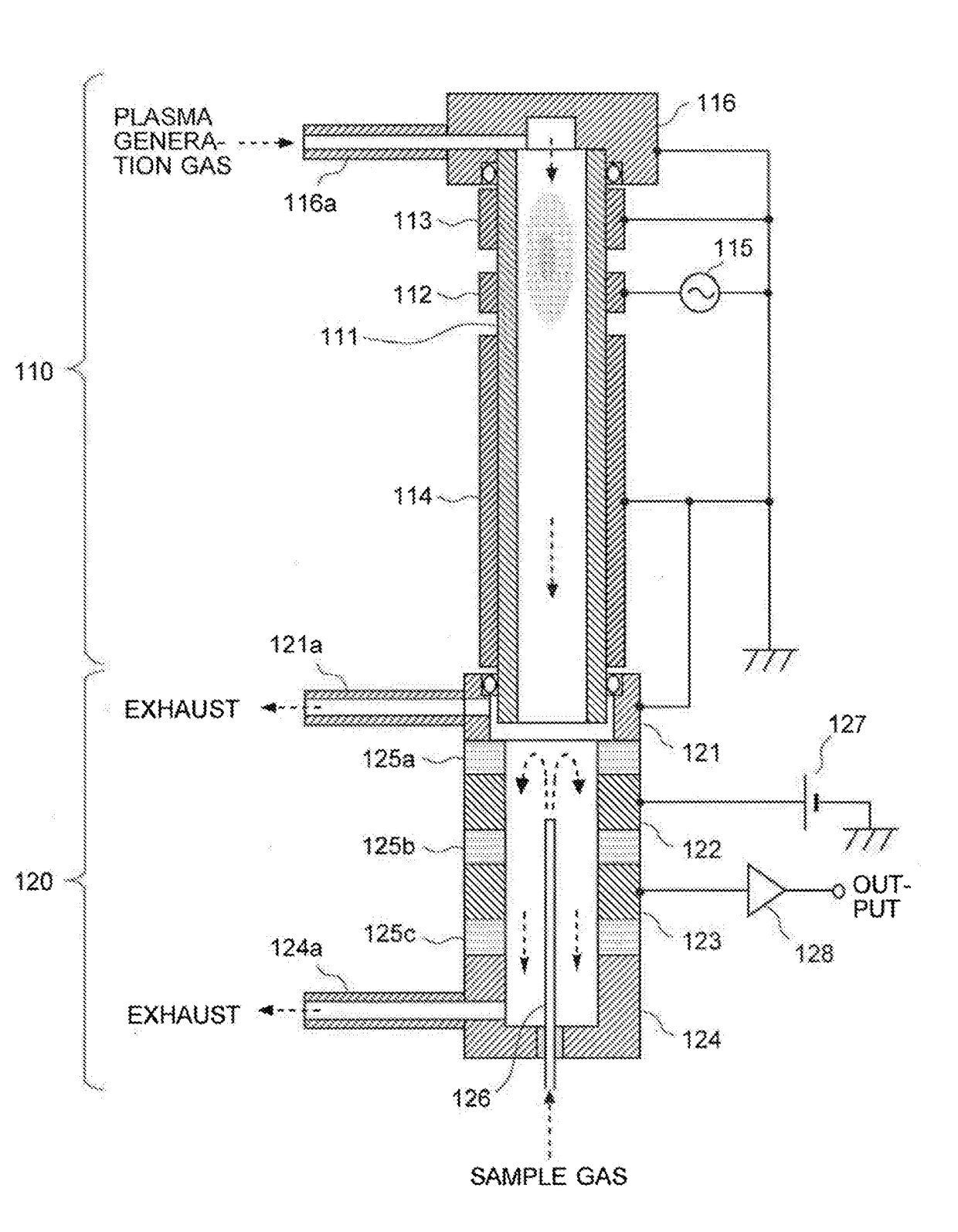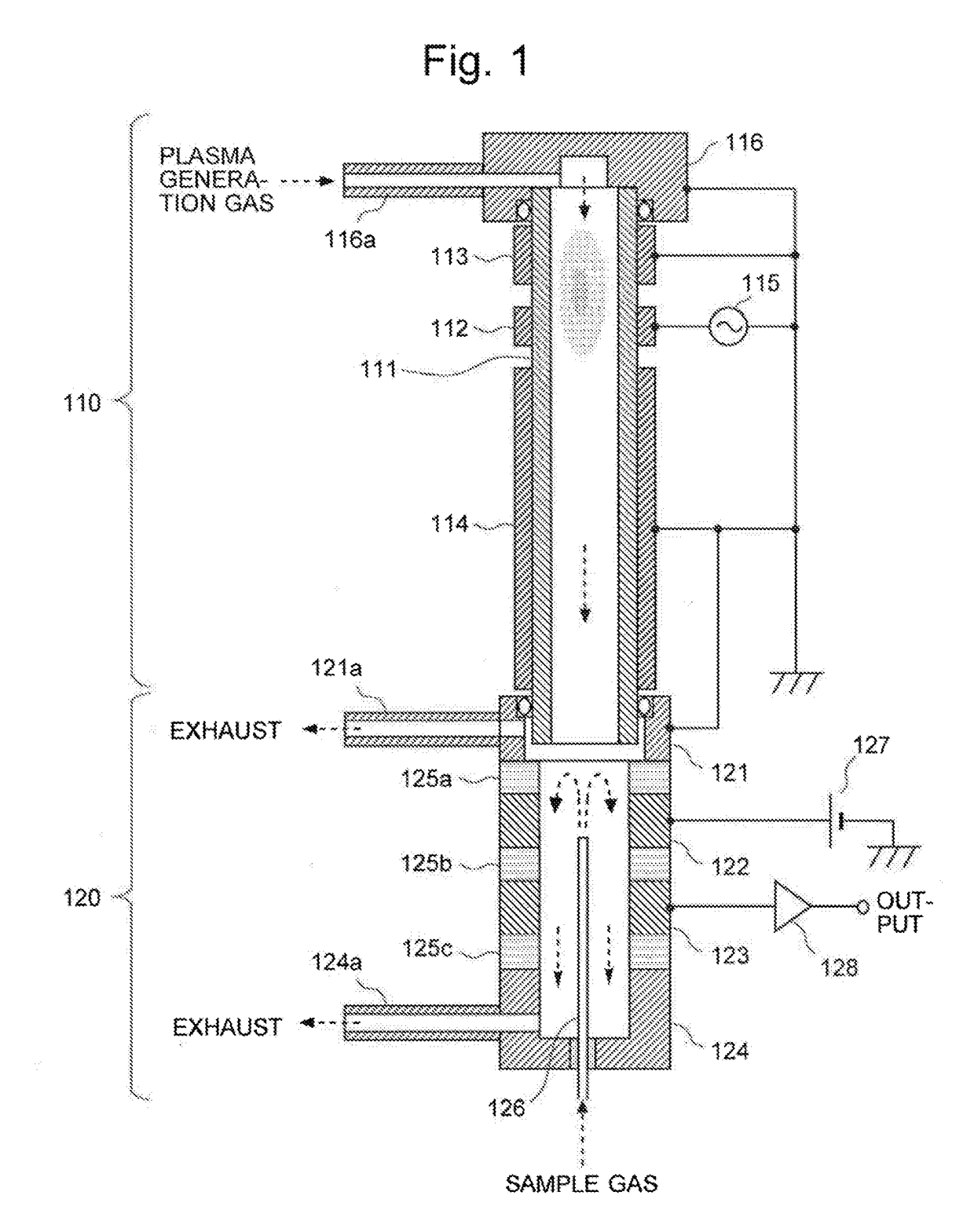Dielectric barrier discharge ionization detector
a technology of ionization detector and dielectric barrier, which is applied in the direction of instruments, measurement devices, scientific instruments, etc., can solve the problems of difficult prediction of the optimum electrode arrangement and discharging conditions, and achieve the effects of preventing the expansion of the plasma generation area, improving the sn ratio, and generating the single-side barrier discharg
- Summary
- Abstract
- Description
- Claims
- Application Information
AI Technical Summary
Benefits of technology
Problems solved by technology
Method used
Image
Examples
first embodiment
[0057]FIG. 1 is a schematic configuration diagram of an Ar-BID according to one embodiment (first embodiment) of the present invention.
[0058]The Ar-BID of the present embodiment includes a cylindrical dielectric tube 111 through which a plasma generation gas is passed. In the following description, for convenience of explanation, the vertical direction is defined in such a manner that the upstream side in the flow direction of the gas (indicated by the downward arrows in FIG. 1) in the cylindrical dielectric tube 111 is called the “upper” side, and the downstream side is called the “lower” side. However, this definition does not limit the direction in which the Ar-BID should be used.
[0059]On the outer wall surface of the cylindrical dielectric tube 111, three ring-shaped electrodes made of an electric conductor (e.g. stainless steel or copper) are circumferentially formed at predetermined intervals of space along the flow direction of the gas.
[0060]Among the three electrodes, the ce...
second embodiment
[0078]Another embodiment (second embodiment) of the Ar-BID according to the present invention is hereinafter described with reference to FIG. 6. FIG. 6 is a schematic configuration diagram of the Ar-BID according to the present embodiment.
[0079]The Ar-BID of the present embodiment includes an external dielectric tube 511 made of a dielectric material, such as quartz. For example, a quartz tube measuring 7 mm in outer diameter and 5 mm in inner diameter can be used as the external dielectric tube 511. A ring-shaped electrode 512 made of metal (e.g. stainless steel or copper) is circumferentially formed on the outer circumferential surface of the external dielectric tube 511.
[0080]At the upper end of the external dielectric tube 511, a tube-line tip member 516 having a cylindrical shape with a closed top and art open bottom is attached. A gas supply tube 516a is connected to the circumferential surface of the tube-line tip member 516. The tube-line tip member 516 and the supply tube 5...
PUM
 Login to View More
Login to View More Abstract
Description
Claims
Application Information
 Login to View More
Login to View More - R&D
- Intellectual Property
- Life Sciences
- Materials
- Tech Scout
- Unparalleled Data Quality
- Higher Quality Content
- 60% Fewer Hallucinations
Browse by: Latest US Patents, China's latest patents, Technical Efficacy Thesaurus, Application Domain, Technology Topic, Popular Technical Reports.
© 2025 PatSnap. All rights reserved.Legal|Privacy policy|Modern Slavery Act Transparency Statement|Sitemap|About US| Contact US: help@patsnap.com



